-
Waste ash from coal could save billions in repairing U.S. bridges and roads
The more than 450 coal-burning electric power plants in the United States produce about 130 million tons of “flyash” each year; before air pollution laws, those fine particles of soot and dust flew up smokestacks and into the air; power plants now collect the ash; researchers say that coating concrete destined to rebuild America’s crumbling bridges and roadways with some of the millions of tons of that left-over ash could extend the life of those structures by decades, saving billions of dollars of taxpayer money
-
-
Artificial clouds to help keep 2022 World Cup cool
Tiny Qatar will be the host of the 2022 Soccer World Cup; trouble is, temperatures in June and July can reach up to 50C (122F), leading to worries about the health effects of players and spectators; Qatari researchers say they have a solution: artificial clouds; the clouds are made from a lightweight carbon structure, and carry a giant envelope of material containing helium gas; four solar-powered engines move the structure via remote control
-
-
Rising seas and coastal risks
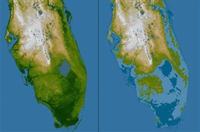
Most scientists believe that melt water from glaciers, the Greenland ice sheet, and possibly the West Antarctic ice sheet, along with thermal expansion from warming oceans, will raise sea levels by one-half to one meter (1.6 to 3.2 feet) over the next century and by one meter to two meters (6.5 feet) over the next 200 years; if sea level rises by a meter, “we will see higher tides, higher tidal velocities and tidal inundation every day,” says one expert; “And we’ll have a different shoreline”
-
-
China raises rare Earth elements production
China has about 30 percent of rare earths deposits but accounts for 97 percent of global production; the Ministry of Land and Resources said Thursday that this year’s production quota of rare earths will be 93,800 tons, an increase of about 5 percent over 2010
-
-
Jersey community college first to offer homeland security degree
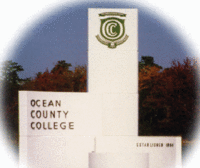
Ocean County College is the first community college in New Jersey to begin offering students an associate’s degree in homeland security studies; as police departments across the United States have seen their budgets slashed, it has become increasingly difficult for recent graduates hoping to find jobs as police officers; the program encourages students to pursue law enforcement opportunities with DHS; currently there is a need in the private and public sector for qualified personnel, but a shortage of talented individuals; the program will introduce homeland security to students and if they are interested in a position with the government must receive a bachelor’s degree from a four year college
-
-
Corruption in academic accreditation
Little-known colleges, most unaccredited, exploit Byzantine federal regulations, enrolling almost exclusively foreign students and charging them upward of $3,000 for a chance to work legally in the United States; they flourish in California and Virginia, where regulations are lax, and many of their practices are shoddy — for instance, holding some classes on only three weekends per semester; these colleges usher in thousands of foreign students and generate millions of dollars in profits because they have the power, bestowed by the U.S. government, to help students get visas
-
-
UN warns of potential food crisis
A UN Food and Agriculture Organization official warned that countries are not doing enough to increase food production to meet rising demand and that the world could be headed for a global food crisis; global food production must rise by 70 percent in order to meet the estimated demand for food; food prices have already soared in recent months and in 2010 food prices increased by 25 percent; rising prices sparked food riots in Egypt and Tunisia, which contributed to the overthrow of their governments; large disasters and droughts have significantly reduced crop yields across the world; as supply has fallen, demand has spiked due to population growth and increased use of food to manufacture biofuels
-
-
Lockheed developing autonomous and covert rover
A surveillance robot aims to operate around humans without being detected by them; the machine uses a laser scanner to builds a 3D computer model of its surroundings and uses a set of acoustic sensors to distinguish the proximity and direction of footsteps
-
-
After EPA fine, mining company building $200 million water treatment plant
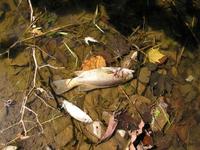
America’s largest underground coal mining company, Consol Energy, is constructing a $200 million water treatment plant in West Virginia, after being fined $5.5 million by the Environmental Protection Agency (EPA); in 2009 discharge from Consol’s mining operation caused a toxic golden algae bloom that killed aquatic life along thirty miles of Dunkard Creek; the advanced waste water treatment plant will be the largest facility in Appalachia; the plant will be capable of treating 3,500 gallons of water per minute and will remove more than forty-three tons of dissolved solids, including eleven million pounds of chloride
-
-
Drought-prone pasts may foretell New York's and Atlanta's futures
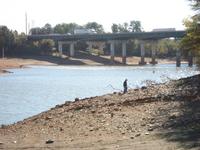
By fall 2007, during the second year of a three-year drought, Atlanta had roughly three months’ supply of water remaining while Athens, Georgia was down to approximately fifty days; another drought dramatically lowered New York City reservoirs to 33 percent of capacity in 1981; droughts in those cities and their surrounding regions were typically longer and more frequent centuries ago than they were for most of the twentieth century; a return to historic climate patterns would bring more frequent and prolonged droughts
-
-
First response, law enforcement ground robot market to grow
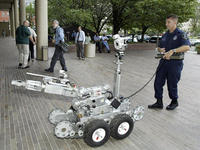
The current market for first responder and law enforcement ground robots is estimated at $203 million; just-published research says that the market is poised for a significant growth; first responder robots cost about $50,000 and up, which is the cost of a person for one year; the challenge for vendors is thus to find applications where the robot is used 24x7 365 days per year
-
-
Oil industry creates center for off-shore safety
Following several accidents on off-shore oil rigs, the U.S. oil and gas industry will launch a center dedicated to investigating safety issues related to off-shore drilling; the center will be operated by the American Petroleum Institute (API) but will be walled off from the trade group’s lobbying work
-
-
Innovative decontamination cloth reaches market
A new decontamination cloth, developed for use by soldiers and first responders, is now available in several forms — as preshaped mitts for personal wipedowns if someone is exposed to toxins or chemicals, individual wipe cloths and pads, and in rolls perforated to produces 12-inch by 12-inch sheets, like paper towels in a kitchen
-
-
Past "hyperthermals" offer clues about anticipated climate changes
Bursts of intense global warming that have lasted tens of thousands of years have taken place more frequently throughout history than previously believed; most of the events raised average global temperatures between 2° and 3° Celsius (3.6 and 5.4° F), an amount comparable to current conservative estimates of how much temperatures are expected to rise in coming decades as a consequence of anthropogenic global warming; most hyperthermals lasted about 40,000 years before temperatures returned to normal
-
-
Napolitano enlists MIT engineers and scientists
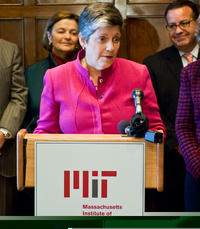
At a recent speech at the Massachusetts Institute of Technology (MIT), Homeland Security Secretary Janet Napolitano urged for greater private sector involvement to help develop technological solutions to secure critical infrastructure and the border; Napolitano said that technology will be the key to DHS’ future in screening passengers and cargo more effectively and efficiently; she also called for more people with cybersecurity, engineering, and science skills to assist the government; in particular, she pointed to the “data problem,” with the massive amounts of data that government agencies must sift through to detect terrorist threats, the sheer volume alone presents a logistical challenge to counter-terrorism efforts
-
More headlines
The long view
New Technology is Keeping the Skies Safe
DHS S&T Baggage, Cargo, and People Screening (BCP) Program develops state-of-the-art screening solutions to help secure airspace, communities, and borders
Factories First: Winning the Drone War Before It Starts
Wars are won by factories before they are won on the battlefield,Martin C. Feldmann writes, noting that the United States lacks the manufacturing depth for the coming drone age. Rectifying this situation “will take far more than procurement tweaks,” Feldmann writes. “It demands a national-level, wartime-scale industrial mobilization.”
How Artificial General Intelligence Could Affect the Rise and Fall of Nations
Visions for potential AGI futures: A new report from RAND aims to stimulate thinking among policymakers about possible impacts of the development of artificial general intelligence (AGI) on geopolitics and the world order.
Smaller Nuclear Reactors Spark Renewed Interest in a Once-Shunned Energy Source
In the past two years, half the states have taken action to promote nuclear power, from creating nuclear task forces to integrating nuclear into long-term energy plans.
Keeping the Lights on with Nuclear Waste: Radiochemistry Transforms Nuclear Waste into Strategic Materials
How UNLV radiochemistry is pioneering the future of energy in the Southwest by salvaging strategic materials from nuclear dumps –and making it safe.
Model Predicts Long-Term Effects of Nuclear Waste on Underground Disposal Systems
The simulations matched results from an underground lab experiment in Switzerland, suggesting modeling could be used to validate the safety of nuclear disposal sites.
